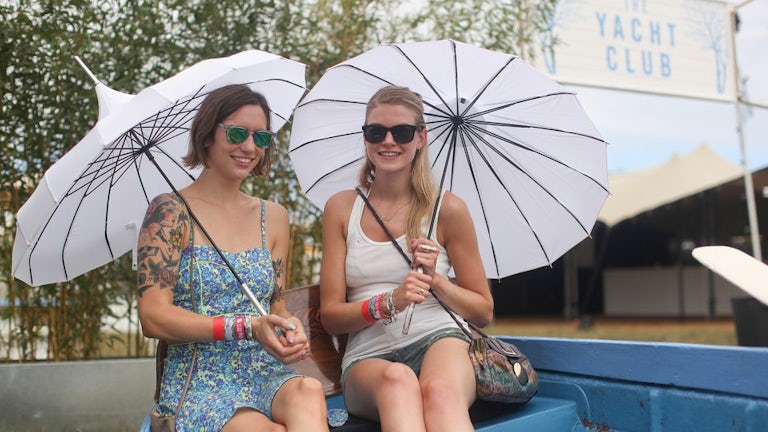Shopping Bag (0)
Shopping bag is empty


How brands can get better at being at festivals...
This island has a long love affair with festivals. From one-day festivals to week-long marathons, last year the UK saw over a thousand open their muddy gates to music lovers, hedonists and musos alike.
Looking back at our history, our affair with the festival started not in the 60’s but as far back as the 5th century with our pagan ancestors. So it’s no surprise that we, as a nation, have a strong urge to roll around in the mud under the moonlight losing ourselves in collective, musical, blissed-out moments.
But fast forward and we are now debating festivals’ worth, relevance and future. For brands that want to collaborate with festivals, this creates both upsides and downsides. So here we’ll look at the fundamentals of getting it right; and we’ll question whether the muddy approach is always the most effective way to connect with audiences.
One of the biggest issues facing festivals is the downturn of hedonism that comes from today’s new generations. Younger audiences are drinking less and have been accused of being a rather beige and boring bunch. However this lack of appetite to get wasted hasn’t meant that young people are less likely to go to festivals. They just might not be as tanked as crowds were 10 years ago.
But when you look at how these abstemious festival goers are usually targeted by brands, marketers often seem to rely on people being trollied to be receptive. And there is such a thing as being ‘too receptive’ to remember any interaction at a festival, let alone a branded one.
Then there’s the idea that the festivals circuit has become over-saturated. There’s a common belief that the overall market has hit its ceiling and is no longer that desirable to a younger audience. But because the UK is hugely diverse when it comes to festivals, audiences now have more choice than ever when it comes to genres, sub-genres and collectives.
From Ghostfest’s extreme metal, to Foreverland’s garage and bass and the Pop Punk Pile Up, every musical tribe is now catered for. So festivals can provide unrivalled opportunities for niche marketing; which is surely where all marketing is headed now? And as for their popularity, last year3.5-million people attended a festival in the UK, with the market estimated to be worth £2bn to the economy. That’s a helluva lot of revellers losing themselves in the mud every year.
So our love affair with festivals isn’t waning in this country. But brands do need to get better at being at festivals. One common mistake is prioritising maximum stand out. Rather than asking ‘how can we be visible’, ask ‘how can we be integral to the experience’ because if you’re not adding anything to the space, you really shouldn’t be there at all. This doesn’t mean that you need a big stage,or huge acts. It could merely mean that you are ‘of service’ to your audience, in a meaningful way.
For brands to develop an effective presence at festivals, it’s about nailing when you should stand out, or merely leave a lasting impression; whether you should create a specific experience, or just add to the overall vibe.The key questions are: How can you add to the overall ethos of the festival? Where does your brand’s values match up to the festival’s? How can you co-create and collaborate both with the festival and potentially your audience?
But perhaps the most crucial question you should ask yourself is this: is a festival the right way to go? You need to analyse why you’re really doing it and sense check this purpose against other strategies that could deliver the same result. Are you talking to the right audience? Would you risk diluting your brand message by being there? Is your approach adding to the festival’s culture or parasitically leeching from it?
At Amplify our love of festivals is strong, both personally and professionally. From crazy golf with Southern Comfort at Bestival, introducing festival goers to Lavazza and boating with Belvedere, we have loved every minute of it. Why? Because festivals are a place to let your brand be experimental. They present an opportunity to be ultra exciting, replicating the identity shift of the people who are attending.
But as much as we love a festival, there are times when a festival just isn’t the right solution for a brand. There are so many different ways to get the desired result with just as much impact. It’s why we created the world’s smallest festival in a portaloo for Hunter.It’s also why we embarked on our own month-long celebration of urban art and culture for Converse in Peckham; a situation where the festival ethos was needed, but the muddy setting wasn’t.
Festivals and the UK. It’s a love affair that started thousands of years ago, and one that I believe will continue, even though it’s evolving. The key for brands is to evolve with it, and your audiences, to become an even more integral part of this magical pocket of culture.